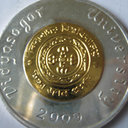Modulation of small intestinal homeostasis along with its microflora during acclimatization at simulated hypobaric hypoxia.
Anahtar kelimeler
Öz
At high altitude (HA) hypobaric hypoxic environment manifested several pathophysiological consequences of which gastrointestinal (GI) disorder are very common phenomena. To explore the most possible clue behind this disorder intestinal flora, the major player of the GI functions, were subjected following simulated hypobaric hypoxic treatment in model animal. For this, male albino rats were exposed to 55 kPa (approximately 4872.9 m) air pressure consecutively for 30 days for 8 h/day and its small intestinal microflora, their secreted digestive enzymes and stress induced marker protein were investigated of the luminal epithelia. It was observed that population density of total aerobes significantly decreased, but the quantity of total anaerobes and Escherichia coli increased significantly after 30 days of hypoxic stress. The population density of strict anaerobes like Bifidobacterium sp., Bacteroides sp. and Lactobacillus sp. and obligate anaerobes like Clostridium perfringens and Peptostreptococcus sp. were expanded along with their positive growth direction index (GDI). In relation to the huge multiplication of anaerobes the amount of gas formation as well as content of IgA and IgG increased in duration dependent manner. The activity of some luminal enzymes from microbial origin like a-amylase, gluco-amylase, proteinase, alkaline phosphatase and beta-glucuronidase were also elevated in hypoxic condition. Besides, hypoxia induced in formation of malondialdehyde along with significant attenuation of catalase, glutathione peroxidase, superoxide dismutase activity and lowered GSH/GSSG pool in the intestinal epithelia. Histological study revealed disruption of intestinal epithelial barrier with higher infiltration of lymphocytes in lamina propia and atrophic structure. It can be concluded that hypoxia at HA modified GI microbial imprint and subsequently causes epithelial barrier dysfunction which may relate to the small intestinal dysfunction at HA.



